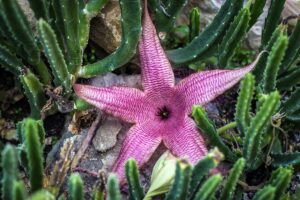The prickly, toughened exterior of a cactus might not look too inviting. But to certain critters looking for food and shelter, it’s actually quite alluring.
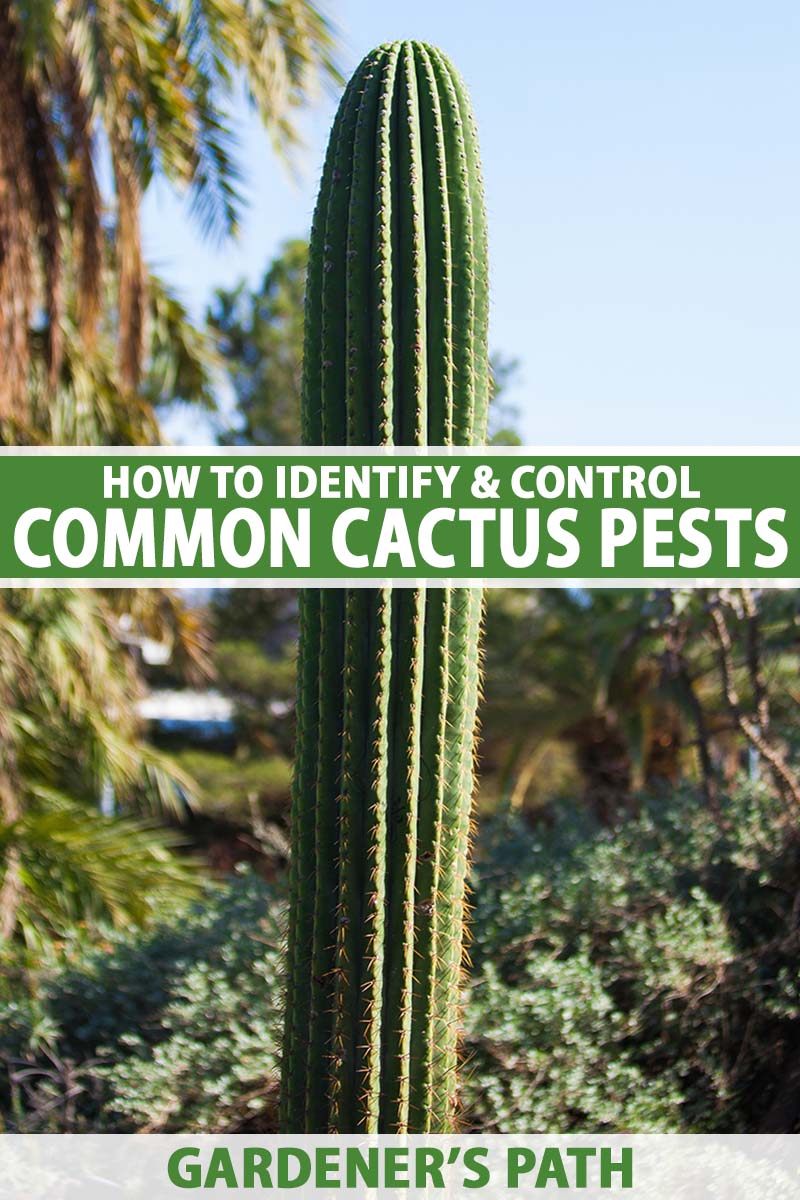
We link to vendors to help you find relevant products. If you buy from one of our links, we may earn a commission.
In many ways, cacti are the ultimate survivors.
Features such as water-conserving stems, modified spiny leaves, and a crassulacean acid metabolism allow these plants to live in blistering desert environments that would leave weaker plants shriveled, cooked heaps of dehydrated vegetation.
But they’re not invincible. I mean, don’t get it twisted: the rugged morphology of a cactus is a powerful deterrent for many animals. But other creatures are, as the kids say, “built different.”
For a cactus to not just survive but thrive, it’s important to do your darndest to keep pests away. Most of them won’t damage your prickly plants that severely, but prevention and management efforts can make a significant aesthetic difference in the long run.
This guide provides the low-down on 11 kinds of cactus pests, and walks you through everything you need to know to control them, as well as keeping them away from the get-go.
Let’s boogie!
11 Types of Cactus Pests
But first, some words of warning:
The surfaces of cacti are coated in oils and waxes that are very effective at preventing water loss.
However, they can also be particularly susceptible to damage from certain insecticidal soaps and high concentrations of neem oil – more so than other plants.
Therefore, it’s imperative to double-check the compatibility of your chosen chemical controls with the species that you plan to use them on.
Product labels, the opinions of skilled succulent growers, and supplemental research can all be very helpful in this arena.
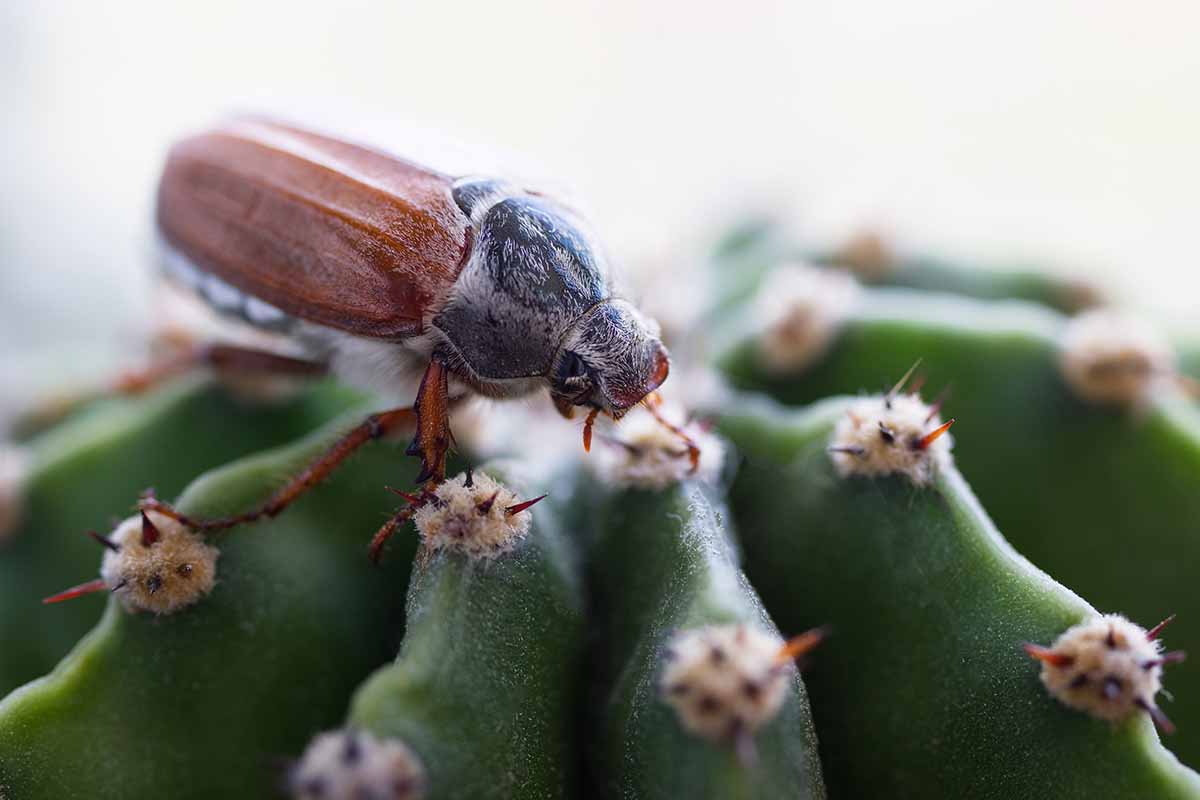
You can also take matters into your own hands and find out for yourself by testing your choice of chemicals on a small portion of your plant first, just to see how it reacts.
This does add a little time to your pest management plan, but it’s better than just assuming safety, applying it wholesale, and leaving your entire specimen damaged.
If you do spray a cactus with harsh chemicals that could potentially disrupt its protective coating, make sure to do so in the evening to mitigate any sun damage that could result.
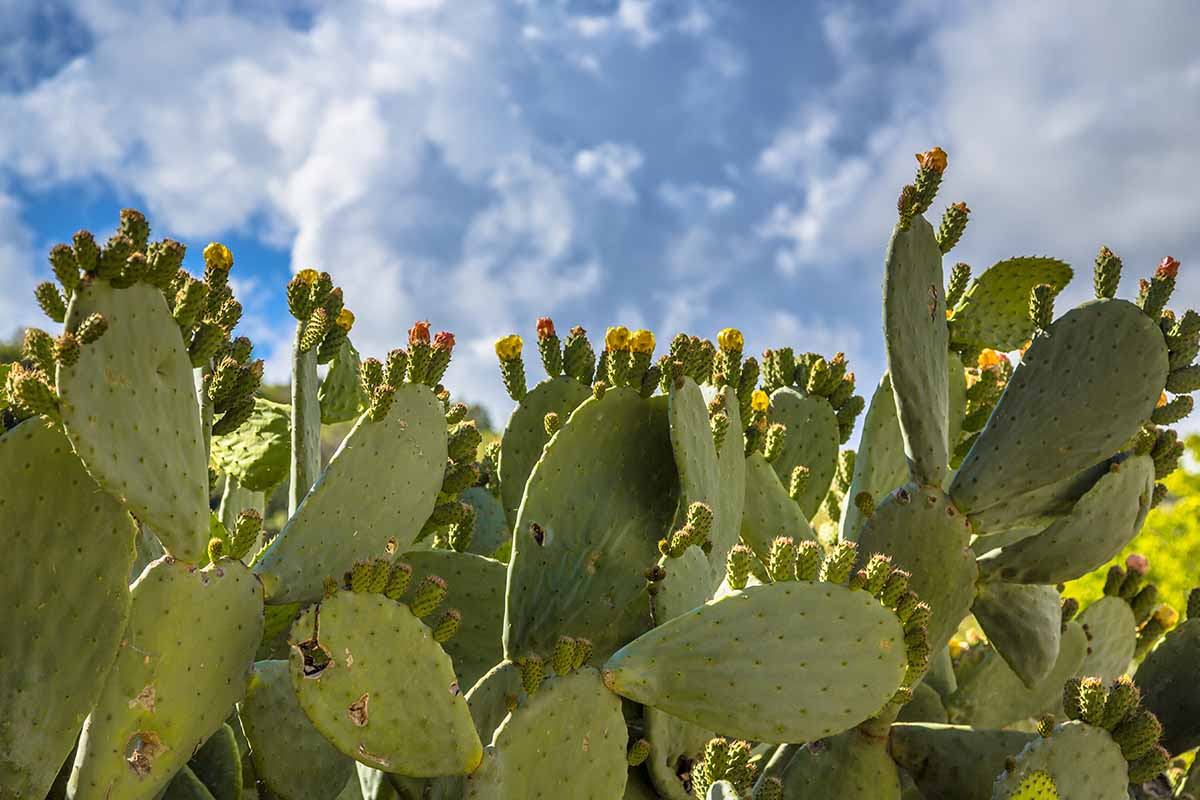
And here’s one last piece of advice, regardless of the types of plants and pests that you’re dealing with: proper cultivation is absolutely essential for preventing pest problems.
Much like dogs can smell fear and moms can sense when something is wrong, pests can tell when a plant is unhealthy.
And since unhealthy plants are easier to infest and harm than healthy ones, it pays to keep your specimens in tip-top physiological form.
1. Aphids
I know we’re technically doing this alphabetically, but it also makes logical sense to start our list off with aphids.
If you’ve been a green thumb for any significant amount of time, then you’ve probably encountered or at least heard of these annoying bugs already.
Small, soft-bodied, and translucent, aphids come in black, yellow, red, green, whitish, and gray colors.
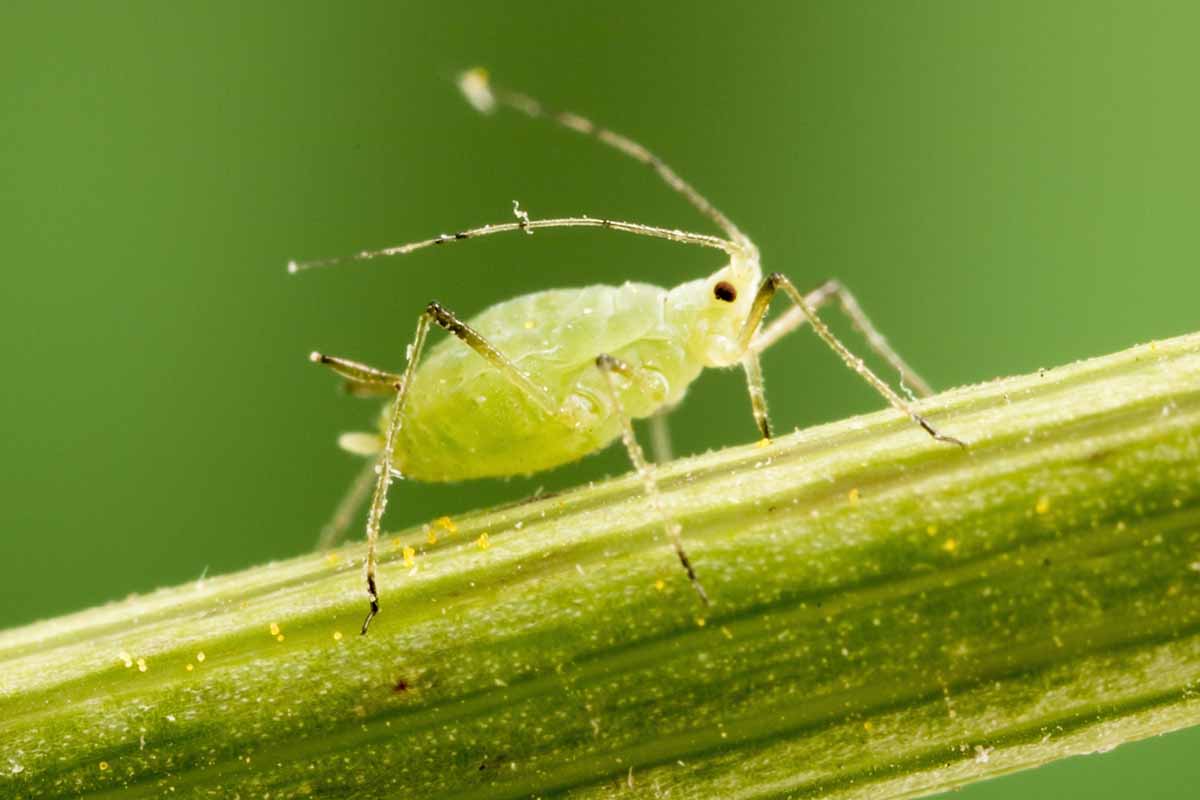
Using their piercing-sucking mouthparts, aphids extract vital fluids from plant tissues, which can result in stunted growth. Plus, they excrete honeydew, which can lead to the formation of black sooty mold.
Strong sprays of water should blast these pests right off of infested surfaces.
To treat plants in indoor spaces that you’d rather not soak with high-velocity agua, try gentle sprays of horticultural oil or diluted isopropyl alcohol.
For the latter, go with a 70 percent isopropyl alcohol solution.
That’s just for the foliar-feeding types, though.
Some kinds of aphids infest the belowground roots of cacti, which can cause chlorosis, wilting, and stunted growth above the soil line.
These can be treated with soil drenches of imidacloprid or dinotefuran, and infestations can be prevented by working diatomaceous earth into the soil above the root zone.
Need OMRI-certified horticultural oil? Monterey sells some in concentrated and in ready-to-use forms at Arbico Organics.
2. Coreids
Also known as “cactus bugs” or Chelinidea vittiger, cactus coreids are true bugs from the order Hemiptera.
Nymphs hatch from tiny, reddish-brown eggs laid on the underside of cactus spines in spring. As the juveniles grow and mature through five instar stages, they increase in size and lose their mostly green to orange coloration.
C. vittiger adults are entirely dark brown to black in hue, save for bright orange to green stripes on their heads and around the perimeter of their backs.
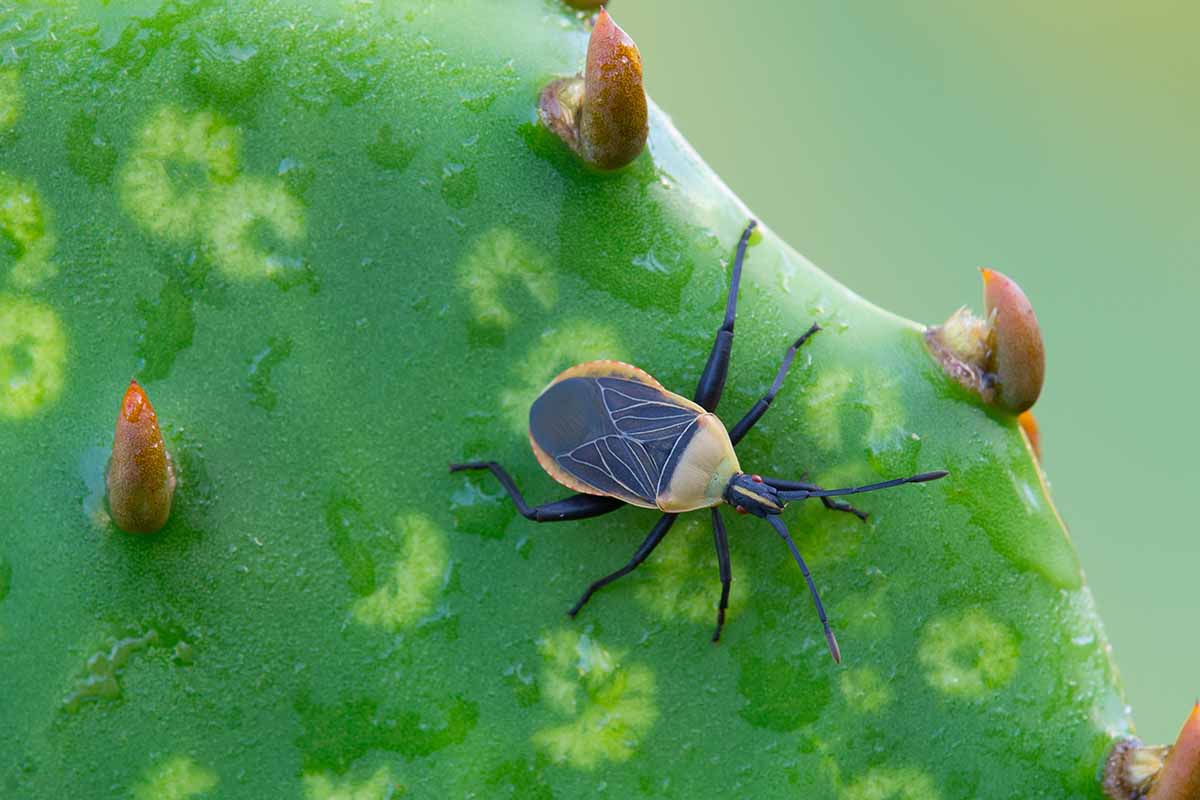
These pests use their piercing-sucking mouthparts to extract sap from cactus flowers, fruits, and pads, leaving circular, light-colored blemishes behind.
Over time, the spots can merge, leaving entire structures pitted, yellowed, and necrotic. In time, significant populations can kill a plant outright.
Nymphs are best controlled with appropriate insecticidal soaps and horticultural oils, while adults can be managed and infestations prevented with foliar sprays or soil drenches containing imidacloprid.
Acetamiprid can also be used as a foliar spray, if you’d like a more environmentally benign neonicotinoid option.
You can also attempt to pluck these bugs off of infested plants and crush them, if you have a Mr. Miyagi-like talent for grabbing agile insects.
Gentle sprays of water can drive the bugs up plants, if you need a strategic advantage.
You can whip up your own insecticidal soap by adding a few drops of dish soap per quart of water.
Alternatively, Bonide offers 12- and 32-ounce spray bottles of their bug-killing formulation, available via Arbico Organics.
3. Fungus Gnats
As if “gnat” wasn’t gross enough…
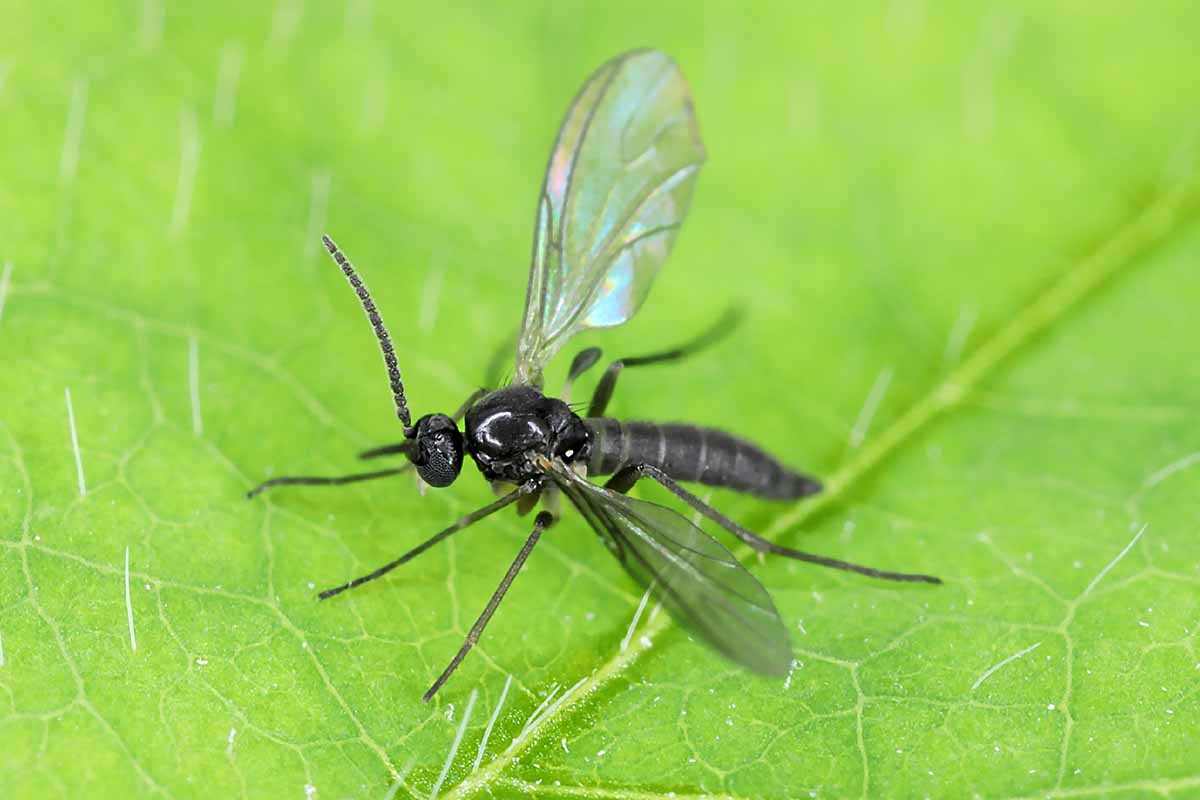
Fungus gnats are mosquito-like black flies that are typically seen hovering above the soil line. The adults are harmless, but their soilborne larvae are fond of consuming cacti roots.
This isn’t usually enough to kill adult specimens, but it’ll really do a number on juveniles and seedlings.
Visits from these pests can be prevented by avoiding overwatering your cacti, since fungus gnats love laying eggs in super soggy soils.
If your soil is already drenched, allow it to dry out in full sun as soon as possible.
Read more about protecting houseplants from fungus gnats in our guide.
4. Longhorn Beetles
Consisting of 20 species from the Moneilema genus, cactus longhorn beetles are easily identifiable in adult form by their pitted, glossy, black, and occasionally white-mottled, hard shells.
The grubs are soft and dark tan, with brown heads.
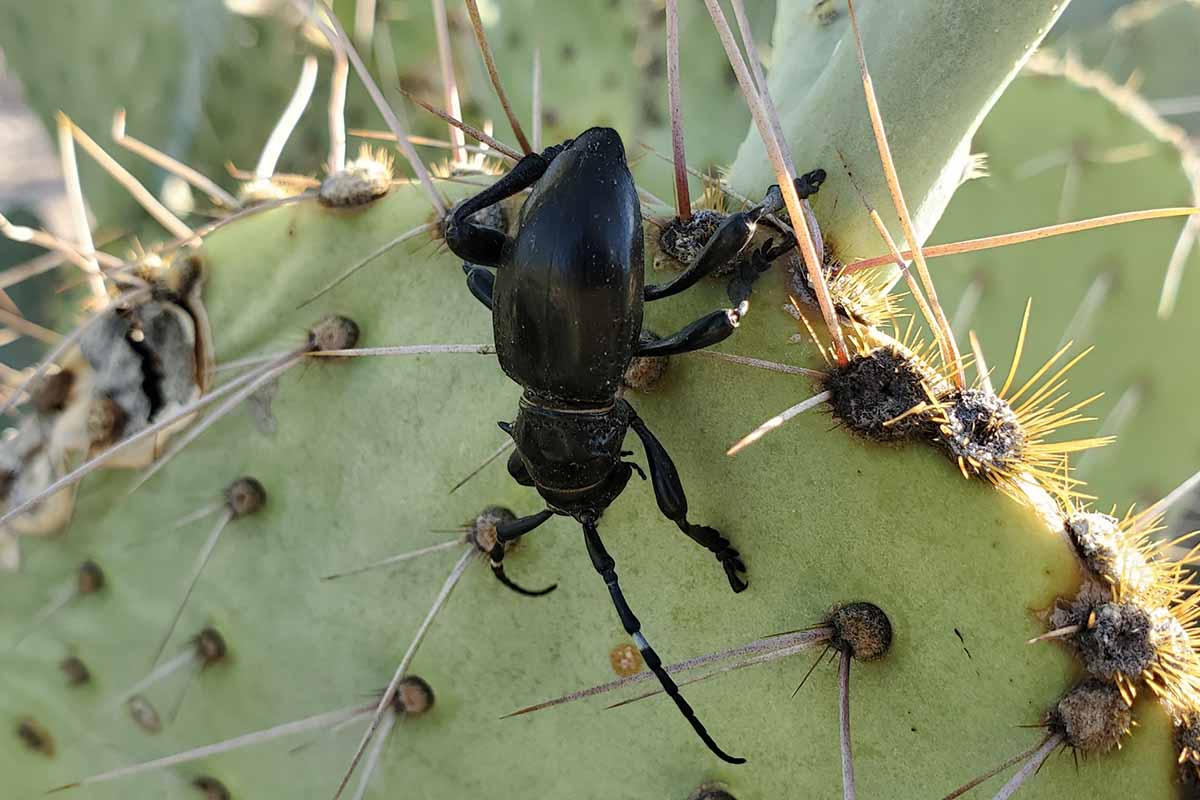
Active from spring to fall, these nocturnal beetles live among the sharp spines of cacti, feeding on the tender growth between them.
After mating in spring to summer, the females lay eggs at the base of plant stems.
Once they hatch, the larvae burrow into the cacti to feed, leaving black, gooey, tunnel-sealing masses behind them. Within the plants, the larvae pupate and mature to adulthood.
All of this feeding results in aboveground damage, yellowing, soft spots, rotted tissue, and hollowed-out stems. This leaves the infested specimen open to pathogens, and may even kill it in severe cases.
You can control these pests by going out in the evenings at the start of their mating season with 12-inch tweezers, which’ll allow you to pick the pests off while staying clear of the pointy spines.
Wear gloves to protect your hands from the beetles’ skin-puncturing mandibles.
Once you’ve caught them, kill ’em dead by freezing them or crushing them underfoot. If you do this before eggs can be laid, then you’ll be preventing larval damage, too.
Learn more about cactus longhorn beetles in our guide.
5. Mealybugs
Another pest of the piercing-sucking variety, mealybugs are flat, oval-shaped, and covered with a mealy white wax.
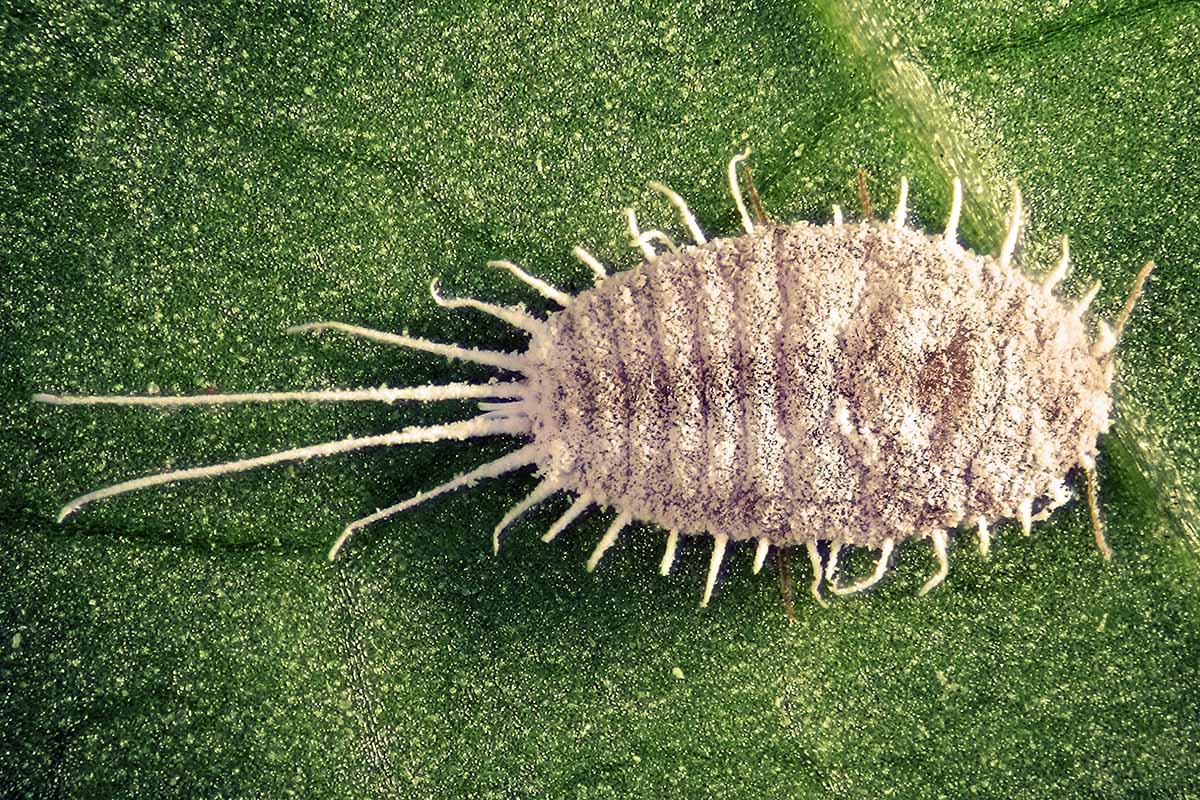
These pests extract vital plant juices, which results in weakened growth, distortion, and possibly even the death of the cactus.
Mealybugs also excrete honeydew, which leads to that gnarly sooty mold that’s so ugly and unhealthy.
Strong sprays of water should knock mealybugs off of sturdy cacti, and 70 percent isopropyl rubbing alcohol can be rubbed on mealybugs via soaked cotton swabs.
Direct applications of permethrin and neem oil can work as well.
Learn more about mealybug identification and control in our guide.
6. Moths
Also known as Cactoblastis cactorum, the cactus moth is a South American native that has proved itself a significant invasive species in the southeastern United States.
The larvae are over an inch long and colored orange with black stripes, while the adults are grayish-brown moths, with a wingspan of about an inch.

Adult females lay chains of 70 to 90 eggs in stick-like protrusions on cactus pads. When they hatch, they consume the pads from the inside out, which can hollow out infested structures in time.
After feeding sufficiently, they emerge, cocoon themselves, and pupate on the ground near the bases of plants, eventually emerging as adults to continue the cycle elsewhere.
Cacti infested with large numbers of C. cactorum larvae can easily be killed. The best form of control is promptly removing the conspicuous “egg sticks,” as well as any infested pads.
Additionally, reaching out to local extension agents may be helpful for both parties – they may have more recommendations, and you’ll be informing them of nearby invasive species activity.
7. Root-Knot Nematodes
Armed with sharp stylets and a very fun scientific name to pronounce, root-knot nematodes are microscopic, eel-esque roundworms from the Meloidogyne genus.
Dwelling in the soil near plants, they puncture the roots with their stylets, which triggers them to swell with knot-like galls. These puncture wounds also create entry points that bacteria and fungi can use to enter the roots.

These galls limit the plant’s uptake of water and nutrients, while also giving the nematodes a place to feed and develop.
Above the soil line, symptoms such as distortion, chlorosis, and stunted growth can become apparent.
It’s best to focus on prevention, since management can be tricky. Using sterile soils, soilless media, and planting in containers can help to prevent nematodes.
Additional tips for root-knot nematode control can be found in our guide.
8. Scale
Multiple types of scale are known to infest cacti, from cochineal scale to brown soft scale.

These round, flat, piercing-sucking pests extract plant sap, which also ends up sucking away the plant’s vigor.
Scale also excrete the ant-attracting and sooty mold-promoting nastiness known as honeydew, which definitely leave their hosts worse off.
First and foremost, you’ll want to quarantine your infested plants, if possible. Move potted specimens to their own quarters to prevent further spread.
Scale can be blasted off with strong bursts of water, pried off by hand, or even scraped off with hard-edged tools.
Sprays of isopropyl alcohol and insecticidal soap also do the trick. Severely infested and afflicted structures should be pruned, and plants beyond saving should be eradicated.
Additional scale management strategies can be found in our guide.
9. Slugs and Snails
Slugs and snails are notoriously gross and slow members of the mollusk phylum.
While the former lacks an external shell and the latter has one, both use a muscular, mucus-secreting foot to move around.
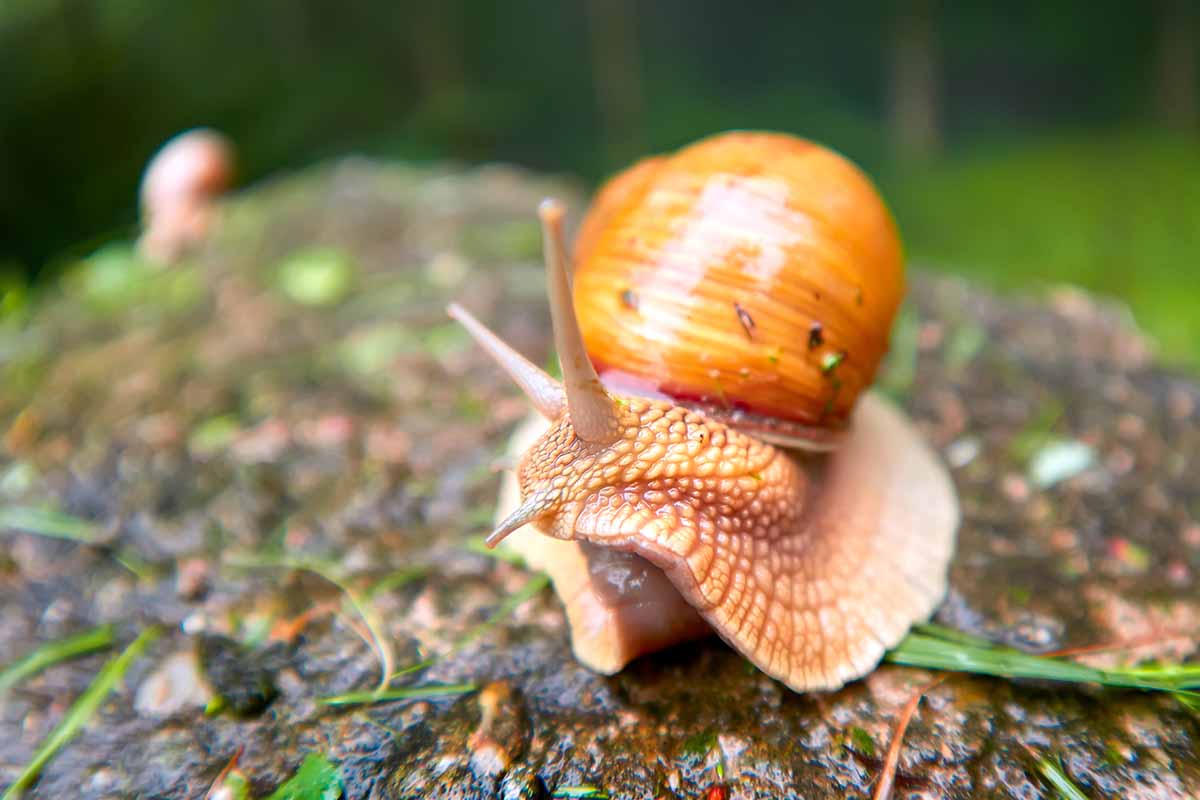
They also both use abrasive tongues to leave irregular, yet smooth-edged feeding holes around the spines of cacti.
Full sun is rough on these creatures, so they tend to do their feeding at nighttime or on overcast days.
Be sure to modify the nearby environment to remove shelters for these pests by removing things that slugs and snails could use for shade: rocks, large weeds, and so on.
Place traps near the stuff that you can’t move, such as outdoor structures and beloved plantings.
For a three-pack of effective slug and snail traps, go visit Gardener’s Supply Company!
You can also go out at night with a flashlight and pick slugs and snails off of your plant by hand. When you’ve got them, you can crush them or throw them away in a trash bag.
If you’re interested, more slug and snail management tips can be found here.
10. Spider Mites
Coming in a variety of different colors, spider mites are arachnids that can damage cacti by sucking out plant juices, leaving small brown feeding dots and clumps of webbing in their wake.
With time and increased severity, this feeding can lead to chlorosis and overall deterioration.
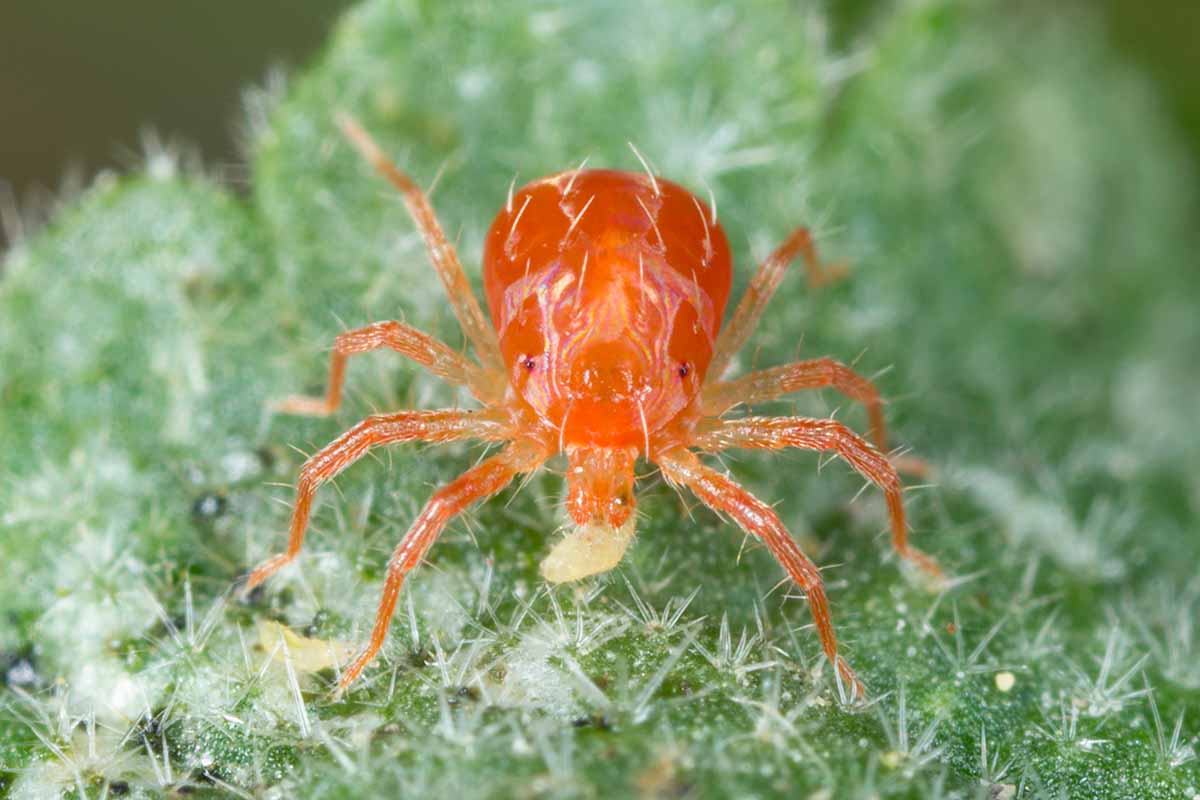
At a fiftieth of an inch in length, spider mites are very small – it’s hard to make them out without a hand lens, or perhaps the magnification app on your phone, if you’re cutting-edge.
Insecticidal soap, neem oil, and strong sprays of water are all solid control measures.
Learn more about managing spider mites in our guide.
11. Vertebrates
It’s not just the spineless creepy-crawlies that can feast on your cacti. Birds and mammals may also have at them.
Various species of birds can peck at your cacti, leaving unsightly feeding wounds in their flesh.
If the damage looks like a beak did it and there’s bird scat on the nearby soil to boot, congratulations: you’ve got birds!
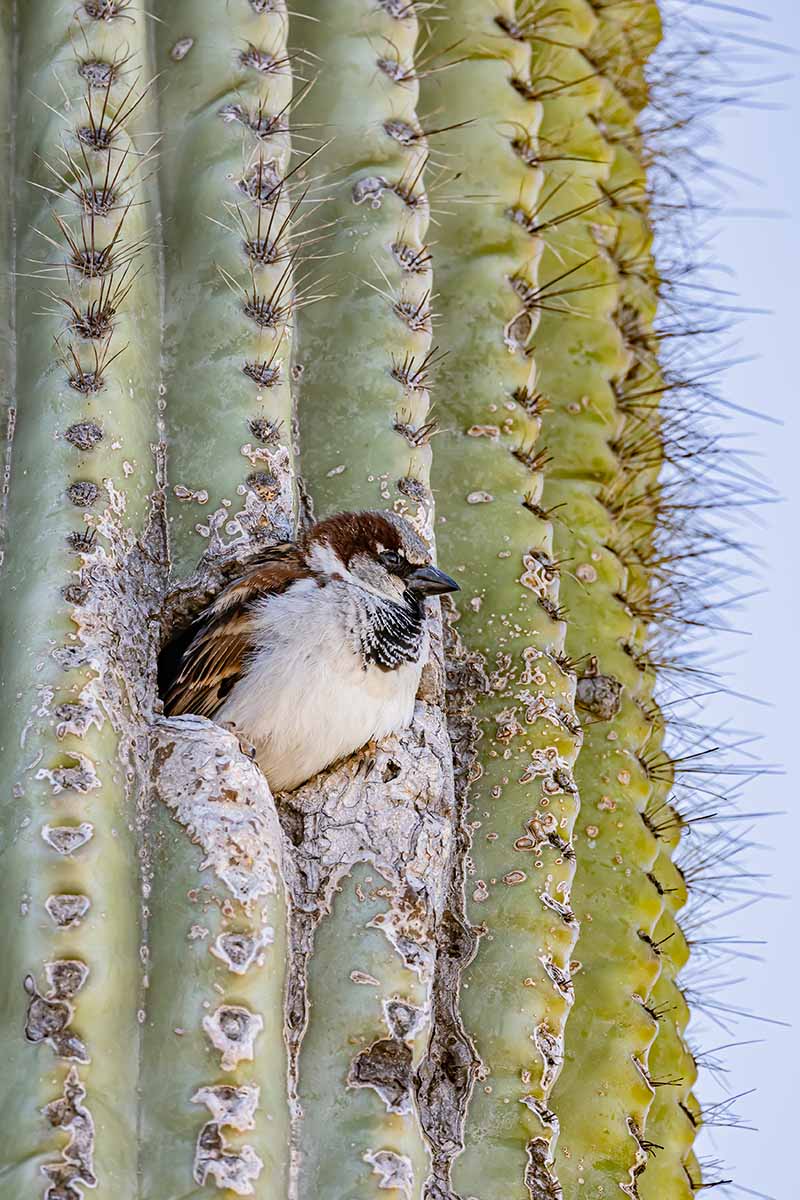
Birds are best kept at bay with visual and/or auditory deterrents. Reflective materials, decoy birds of prey, large “scare eyes,” programmable noise machines, and banging pots and pans are all effective choices.
No matter how you choose to deter birds, it’s essential to mix it up every one to two weeks, as birds will quickly become used to any given deterrent.
Cacti can also be munched on by rabbits and rodents such as rats, gophers, and ground squirrels.
Whether they go to town or just take a curious bite or two, these pests definitely warrant your attention.

Surrounding your specimens with wire fencing that’s four feet tall and buried four to six inches deep should keep out rabbits and gophers, while the climbers should be kept away with species-specific repellents.
Placing mint plants nearby can also work as a natural deterrent.
Managing Pests of Cactus Just Takes Practice
Now that you have the know-how necessary for dealing with cacti pests, all that’s left is to put it into practice! The best teacher is experience, after all.

When they’re kept healthy, cacti are truly glorious. And with the proper pest management, yours are sure to be as well.
Any further questions? Pest problems of your own to share? All of this and more can go in the comments section!
Need some cacti plants to keep pest-free? These three are a fantastic trio to start with:





